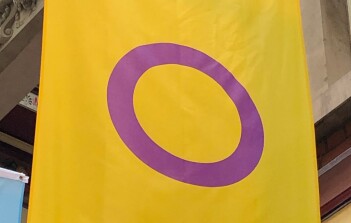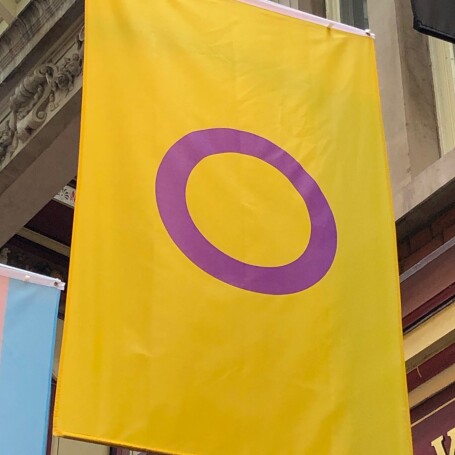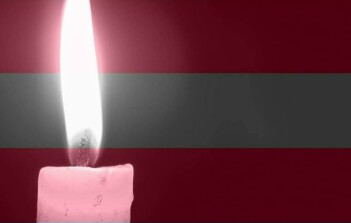
General
Intersex Awareness Day & Intersex Day of Solidarity

26 October is Intersex Awareness Day, and the Intersex Day of Solidarity is on 8 November.
Why a blog on this topic at Talk to the Rainbow? Intersex people and LGBTQ+ people share many common issues related to human rights, health, and discrimination. And many intersex people also identify as LGBTQ+.
We also find that there is generally a lack of knowledge about what being intersex may mean and this is why the 26 October, and the 8 November are important dates. Understanding and acceptance go hand in hand with better knowledge.
Overview
The ISNA has estimated the number of people born with intersex traits. It appears to be more common than at first thought. They estimate that the total number of people whose bodies differ from standard male or female is one in 100 births. Others, such as InterAct, have suggested that the number of intersex people is about the same amount of people who are red haired or have green eyes, which is about 1.7% of the global population. However, we feel that these numerical estimates should not really matter. Because even if there is a very small number of intersex people, that should not in any way justify any one of them being ignored, mistreated, or discriminated against.
People with intersex traits may describe themselves as being Intersex, as having intersex traits, or Diverse Sex Development (DSD) or having Variations in Sex Characteristics (VSC). It’s for each individual to choose the right terminology for them so please be mindful of this.
Intersex people or people with intersex traits have physical sex characteristics that do not fit the socially constructed sex binary of male or female. Sex characteristics are things such as chromosomes, genitalia, hormones, gonads, and secondary sex characteristics. Variations may appear in all or some of these areas.
Intersex is not a third sex but an umbrella term for many sex traits and variations. Sex is on a spectrum. Calling these differences a disorder or disability can be offensive and unhelpful.
LGBTA Wikia says: “Intersex does not describe a specific body type but rather is an umbrella term for a broad range of variations/traits. Some intersex individuals may closely resemble one of the binary sexes, while others are closer to in between. An intersex individual may have characteristics of both the wolffian and müllerian sexes, characteristics that fall somewhere in-between wolffian and müllerian, and/or characteristics that don't fall into either.”
You can learn about the Story of Sex Development from DSD Families, 2019 booklet here. And they have a nice Instagram account for young people by young people here.
Laws
In the UK and in many other countries, laws are still behind in giving intersex people rights and there are no anti-discrimination laws specifically for intersex people. There is no option in the UK to legally assign someone’s sex at birth as intersex or to have it recognised on their passport or any other legal documentation. Intersex is not a an explicitly protected characteristic in the UK Equality Act 2010.
However, according to the Australian Human Rights Commission, it is unlawful since 1 August 2013, to discriminate against a person on the basis of sexual orientation, gender identity or intersex status under federal law.
Activism
Nonconsensual and unnecessary medical procedures are still being performed on infants across the globe just to please the need to fit a sex binary. These procedures often result in trauma, long term physical pain and discomfort and mental distress. Many sex traits are normal variations and do not need to be changed unless the individual wants them to be.
Organisations such as Intersex Day, InterAct, and Amnesty International campaign against intersex variations being pathologised and being still considered ‘disorders’ by many institutions. They also promote the human rights of intersex people and of children who are born with diverse sex development.
Some public figures are both successful intersex role models and activists such as Tony Biffra, the world first openly intersex elected Mayor. She tells her story in this moving piece here.
You are not alone. Be supported, be proud!
Further Resources and Support
United Nations Free and Equal fact sheet:
https://www.unfe.org/wp-content/uploads/2018/10/Intersex-English.pdf
LGBTA Wikia:
https://lgbta.wikia.org/wiki/Intersex
Intersex UK:
https://www.facebook.com/intersexuk/
Rose
To contact Rose, please email contact@talktotherainbow.co.uk
Image credit: photo of installation by Guillaume Vandame at Leadhenhall Market, City of London- October 2021.
Image description: The Intersex Flag created by Morgan Carpenter in 2013: a purple circle on a yellow background. Yellow and purple were chosen for the design as alternatives to the strongly gendered colours of blue and pink. The purple circle in the middle symbolises "wholeness and completeness" as well as "the right to be who and how we want to be."

